Themed collection 5th Congress on Ionic Liquids

Thermoresponsive poly(ionic liquid) hydrogels
Two monomeric LCST ILs, tetrabutylphosphonium styrenesulfonate and tributyl-hexyl phosphonium 3-sulfopropylacrylate, have been copolymerised with crosslinkers of varying length to afford the first ever thermoresponsive poly(ionic liquid)-based hydrogels. Only the longer chain crosslinkers resulted in stable hydrogels. The thermal and actuation behaviour of these crosslinked gels is found to be significantly different to the equivalent linear systems.
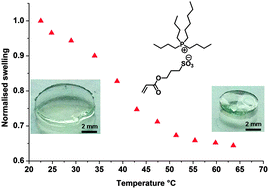
Chem. Commun., 2013,49, 10308-10310
https://doi.org/10.1039/C3CC45862H
Surface modification of MoS2 nanoparticles with ionic liquid –ligands : towards highly dispersed nanoparticles
Highly dispersible MoS2 nanoparticles have been prepared via surface-modification using a novel ionic liquid containing a chelating moiety attached to the cation.
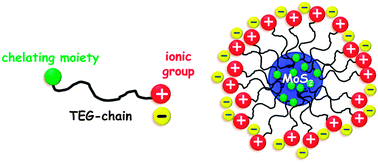
Chem. Commun., 2013,49, 9311-9313
https://doi.org/10.1039/C3CC45305G
Adsorbed and near-surface structure of ionic liquids determines nanoscale friction
Surface-adsorbed and near-surface ion layer structure controls nanotribology in the silica–propylammonium nitrate (PAN)–mica system.
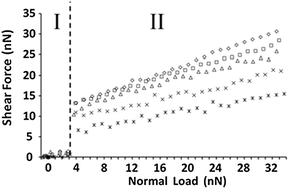
Chem. Commun., 2013,49, 6797-6799
https://doi.org/10.1039/C3CC42844C
Temperature and pH triggered release characteristics of water /fluorescein from 1-ethyl-3-methylimidazolium ethylsulfate based ionogels
In this report we show temperature and pH triggered release characteristics of a fluorescent salt from hybrid materials based on poly(N-isopropylacrylamide) and the ionic liquid1-ethyl-3-methylimidazolium ethylsulfate.
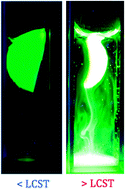
Chem. Commun., 2013,49, 4613-4615
https://doi.org/10.1039/C3CC41272E
Extraction and stability of selected proteins in ionic liquid based aqueous two phase systems
This article discusses the extraction of Rubisco in an ionic liquid (IL) based aqueous two phase system and the stability of proteins in aqueous solutions of IL.

Green Chem., 2014,16, 2670-2679
https://doi.org/10.1039/C3GC42631A
Vaporisation and thermal decomposition of dialkylimidazolium halide ion ionic liquids
Heating [C8C1Im]Cl and [C8C1Im]I gave both neutral ion pair vaporisation and liquid phase thermal decomposition.
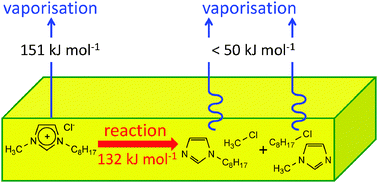
Phys. Chem. Chem. Phys., 2014,16, 1339-1353
https://doi.org/10.1039/C3CP52950A
Pd-catalyzed ethylene methoxycarbonylation with Brønsted acid ionic liquids as promoter and phase-separable reaction media
BAILs are applied as stabilizing acid promoters and phase-separable reaction media in Pd–phosphine catalyzed methoxycarbonylation of ethylene to produce methyl propionate in >99% yield in fifteen reaction cycles.

Green Chem., 2014,16, 161-166
https://doi.org/10.1039/C3GC41380B
Bis-cationic ionic liquid crystals
A series of bis-cationic imidazolium-based compounds are reported, where two imidazolium head groups are bridged by different types of spacers: a saturated C6 hydrocarbon spacer (type A), an ether bridge (type B), a benzylic spacer (type C) and a 2-butyne spacer (type D).
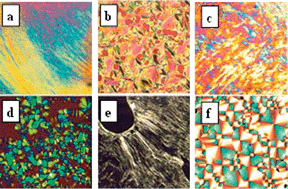
J. Mater. Chem. C, 2014,2, 458-473
https://doi.org/10.1039/C3TC31368A
Exploring ionic liquid–biomass interactions: towards the improved isolation of shikimic acid from star anise pods
Based on shikimic acid – the starting material for the important anti-influenza drug Tamiflu (oseltamivir phosphate) – we present that the dissolution properties of ionic liquids can lead to better access to the valuable ingredient embedded in the biopolymer.

RSC Adv., 2013,3, 26010-26016
https://doi.org/10.1039/C3RA45572F
Understanding the evaporation of ionic liquids using the example of 1-ethyl-3-methylimidazolium ethylsulfate
Understanding the evaporation process: vaporized ion pairs undergo large temperature-dependent changes from bulk phase-like to gas phase-like arrangements.
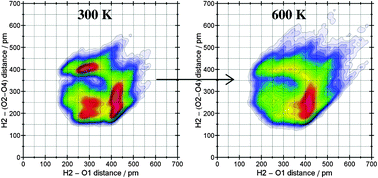
Phys. Chem. Chem. Phys., 2013,15, 18424-18436
https://doi.org/10.1039/C3CP52966E
Effect of alkyl chain length and anion species on the interfacial nanostructure of ionic liquids at the Au(111)–ionic liquid interface as a function of potential
Colloid probe atomic force microscopy (AFM) force measurements are used to elucidate the effect of variation in the cation alkyl chain length and the anion species on IL nanostructure at Au(111) surfaces as a function of potential.
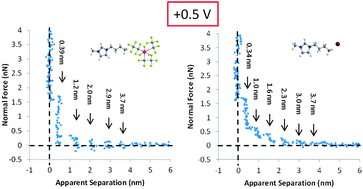
Phys. Chem. Chem. Phys., 2013,15, 14624-14633
https://doi.org/10.1039/C3CP52421C
Ionic liquid lubrication: influence of ion structure, surface potential and sliding velocity
Colloid probe atomic force microscopy (AFM) has been employed to investigate the nanotribology of the ionic liquid (IL)–Au(111) interface.
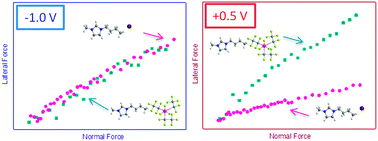
Phys. Chem. Chem. Phys., 2013,15, 14616-14623
https://doi.org/10.1039/C3CP52638K
About this collection
This web collection contains selected contributions from the 5th Congress on Ionic Liquids (COIL-5) held in Portugal in April 2013. The field of ionic liquids has continued to blossom in a variety of directions that are exemplified by the broad scope of the papers in this collection from a range of the Royal Society of Chemistry family of journals. Metal surface interactions in ionic liquid media was a significant topic at the meeting, both from a physical chemistry point of view and also for practical application in lubricants – a number of papers in this collection highlight this growing area of interest. Also of increasingly intense interest is the use of ILs as solvents and media for the processing of biomass and other biopolymers, as well as for chemical processes and materials preparation.
Douglas R. MacFarlane, Guest Editor
Monash University, Australia